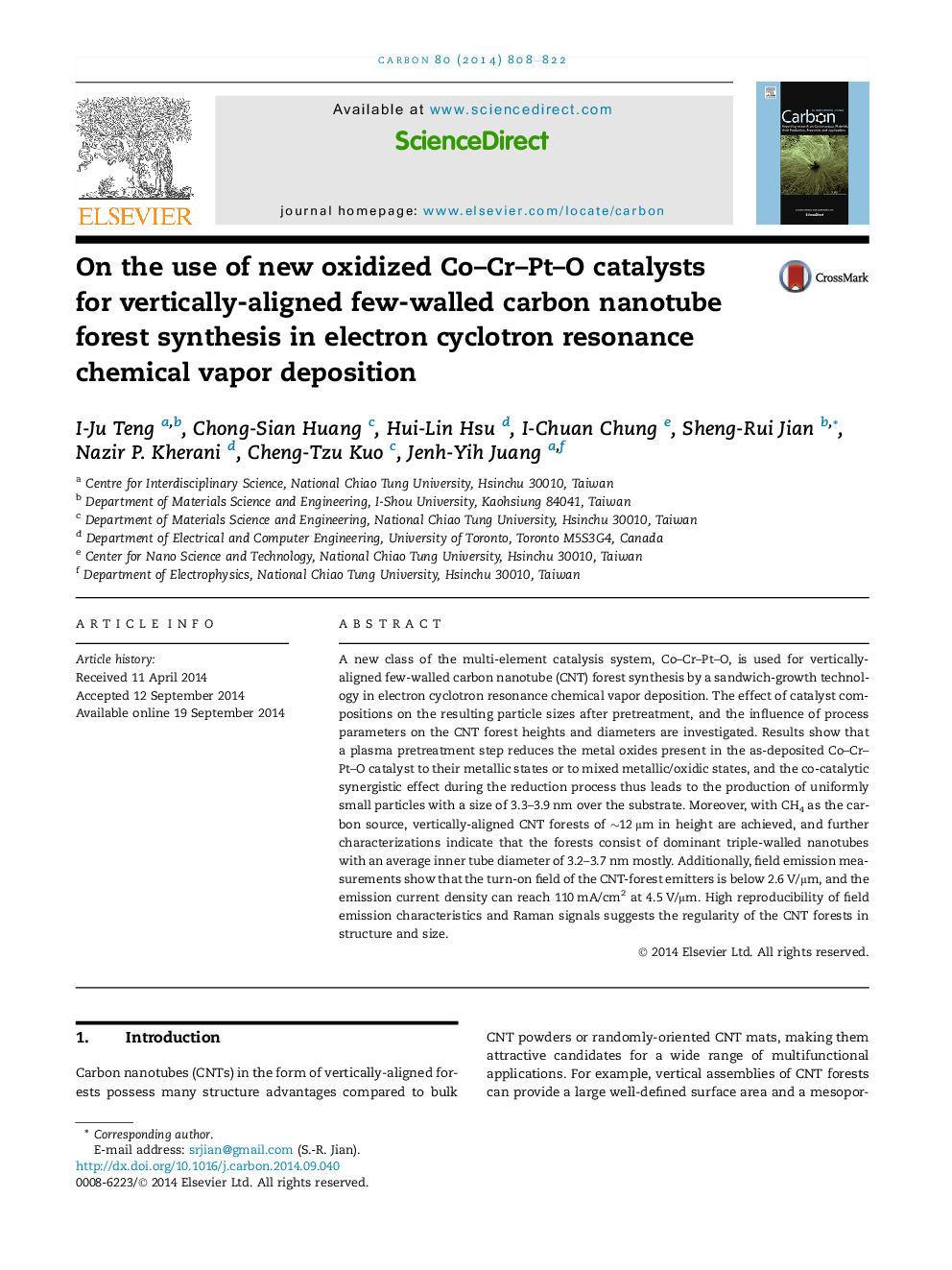| Article ID | Journal | Published Year | Pages | File Type |
|---|---|---|---|---|
| 1413780 | Carbon | 2014 | 15 Pages |
A new class of the multi-element catalysis system, Co–Cr–Pt–O, is used for vertically-aligned few-walled carbon nanotube (CNT) forest synthesis by a sandwich-growth technology in electron cyclotron resonance chemical vapor deposition. The effect of catalyst compositions on the resulting particle sizes after pretreatment, and the influence of process parameters on the CNT forest heights and diameters are investigated. Results show that a plasma pretreatment step reduces the metal oxides present in the as-deposited Co–Cr–Pt–O catalyst to their metallic states or to mixed metallic/oxidic states, and the co-catalytic synergistic effect during the reduction process thus leads to the production of uniformly small particles with a size of 3.3–3.9 nm over the substrate. Moreover, with CH4 as the carbon source, vertically-aligned CNT forests of ∼12 μm in height are achieved, and further characterizations indicate that the forests consist of dominant triple-walled nanotubes with an average inner tube diameter of 3.2–3.7 nm mostly. Additionally, field emission measurements show that the turn-on field of the CNT-forest emitters is below 2.6 V/μm, and the emission current density can reach 110 mA/cm2 at 4.5 V/μm. High reproducibility of field emission characteristics and Raman signals suggests the regularity of the CNT forests in structure and size.
